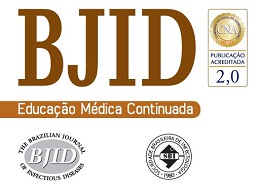The development of diagnostic tests which can readily differentiate between vaccinated and tuberculosis-infected individuals is crucial for the wider utilization of bacillus Calmette-Guérin (BCG) as vaccine in humans and animals. BCG_0092 is an antigen that elicits specific delayed type hypersensitivity reactions similar in size and morphological aspects to that elicited by purified protein derivative, in both animals and humans infected with the tubercle bacilli. We carried out bioinformatics analyses of the BCG_0092 and designed a diagnostic test by using the predicted MHC class I epitopes. In addition, we performed a knockout of this gene by homologous recombination in the BCG vaccine strain to allow differentiation of vaccinated from infected individuals. For that, the flanking sequences of the target gene (BCG_0092) were cloned into a suicide vector. Spontaneous double crossovers, which result in wild type revertants or knockouts were selected using SacB. BCG_0092 is present only in members of the Mycobacterium tuberculosis complex. Eight predicted MHC class I epitopes with potential for immunological diagnosis were defined, allowing the design of a specific diagnostic test. The strategy used to delete the (BCG_0092) gene from BCG was successful. The knockout genotype was confirmed by PCR and by Southern blot. The mutant BCG strain has the potential of inducing protection against tuberculosis without interfering with the diagnostic test based on the use of selected epitopes from BCG_0092.
The Impact Factor measures the average number of citations received in a particular year by papers published in the journal during the two preceding years.
© Clarivate Analytics, Journal Citation Reports 2025
SRJ is a prestige metric based on the idea that not all citations are the same. SJR uses a similar algorithm as the Google page rank; it provides a quantitative and qualitative measure of the journal's impact.
See moreSNIP measures contextual citation impact by wighting citations based on the total number of citations in a subject field.
See more



